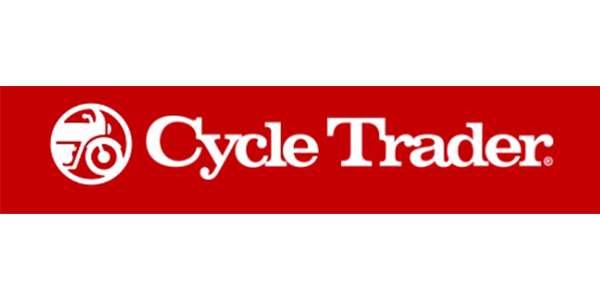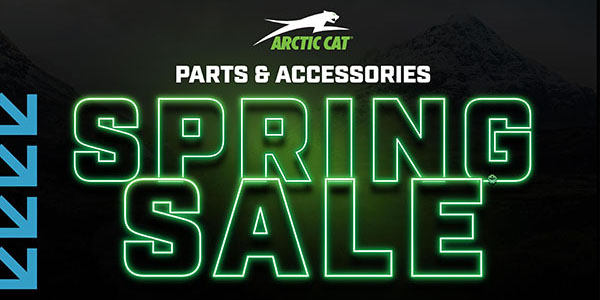The housing market is in the tank. Gas prices are at all-time highs. Banks are reluctant to hand out loans. The economy is slow, and Americans are carrying record levels of consumer debt. You don’t have to be a rocket scientist to know this means that sales of luxury items like motorcycles are going to suffer. You might as well just crawl out onto that 12th-story ledge and do a nice backflip on your way down, right?
Before you start looking for windows that open onto ledges (or maybe a nice little goat farm), bear in mind that there is a silver lining to the dark cloud hanging over the motorcycle industry today.
The economy is down; there is no question of that. I’ll leave determining whether we are in a recession, a slow time, a depression, a market adjustment or a reality check to economists, pundits and my favorite economic oracles, the two Bens (Federal Reserve chairman Ben Bernanke and writer and television personality Ben Stein).
One of the undeniable economic realities is that the banking industry has tightened restrictions on loans (and Stein, Bernanke and the poor saps foreclosing on 1,000 home mortgages per day in California would say rightly so). For customers with credit ratings that hover near 600, a motorcycle loan may not be in the picture. That means lost sales for the motorcycle industry.
“Manufacturers are still aggressively introducing financing programs,” says Todd Baldwin, the general sales manager at Chaparral Motorsports in San Bernardino, Calif. “There are still low-payment, low-interest deferred payment plans available for most factory-backed programs. The biggest problem is the guidelines — how the credit companies are now basing their approval. We are losing sales due to people not getting approved, absolutely.”
Baldwin goes on to say that this has impacted his dealership’s business most significantly in ATV and off-road motorcycle sales, both of which are down this year industry-wide. According to figures released by the Motorcycle Industry Council (MIC), ATV sales are down 23.4 percent from 2007 in the first six months of 2008. Off-highway motorcycles are down 19.7 percent.
Baldwin said his dealership tries to offset those losses by working hard to make sure credit is available. “We try to maintain our relations with our finance companies. We try to work with the credit companies. We counter and will work with down payments and maybe a higher rate and lower term,” Baldwin says.
He also says local credit unions can provide better access to credit. “We are using local credit unions more so than in the past. We are finding some success with three different credit unions,” Baldwin said.
That sentiment is echoed by Ernie Frehe, the sales manager at Good Times Motorsports in Sacramento, Calif. “Definitely, the finance people have turned things up. The person that was approved two years ago is not today,” says Frehe. “We use some local credit unions that are helping us out. The second-chance lenders like American General are helping us out and stepping into the motorsports arena.”
A number of sales and business managers cited credit unions and second-chance lenders as options that can provide higher-risk customers with financing options. And several said that the higher interest rates don’t seem to bother most buyers. The drawback is that some of the lenders, particularly credit unions, aren’t quite as quick to provide credit approvals.
Another current fiscal reality that troubles the Bens is that the real estate bubble has burst, and that has directly impacted the motorcycle market. Home values in both San Bernardino and Sacramento saw large declines in the past year. San Bernardino is down nearly 30 percent from July 2007 to July 2008, while Sacramento took a 25 percent hit in the same time period and is cited by CNN Money as one of the hardest hit real estate markets in the country.
Baldwin says that when the real estate market dropped from its incredible high, sales for the dealership became more challenging.
“We are affected by the real estate failures more than any other place in the SoCal segment. The growth rate was much higher than in any other place in SoCal,” says Baldwin.
“We benefited more than other places because of that growth and the ability to refinance and be able to have this extra amount of refinance money to buy toys,” he says. “This is probably one of the most challenging times that the marketplace has seen in the last 15 to 20 years.”
In Sacramento, the real estate market has similarly dragged down motorcycle sales. Consumer spending and real estate values are tightly linked. As the value of a home rises, it provides the owner with increased access to credit, as well as more confidence in the owner’s financial well-being. This confidence translates into spending.
In areas of the country where home values have held relatively steady, motorcycle sales appear to be doing the same. Certainly for Dan Larkin, the rentals manager at Carolina Harley-Davidson, that holds true. “We seem to be doing fairly well,” he says. “People are price-shopping more than anything else. We are in an area that is one of the few places where the housing market hasn’t been really bad. Charlotte is one of the few places that hasn’t been hit as hard by the mortgage crunch. We have more banking and major industries and have found sales this year are very close to what we did last year at this time.”
A pleasant surprise is that New Orleans is recovering strongly from Katrina, and the area’s home values are now on the rise. And as the real estate market has rebounded, dealerships have experienced record sales, despite the nation’s economic struggles. “We had such a huge surge for the past years after the hurricane,” says Mike Hopper, the business manager at New Orleans Harley-Davidson. “It shot us through the roof. I think we are still doing better than we did before the hurricane. Everybody’s still rebuilding here, but the homes are out of the way and the cars are out of the way, so it’s time to get back to buying luxury items.”
The areas with greatly depreciated values didn’t fare as well. Sales at Good Times Motorsports hit bottom last fall. “In October and November, we were 50 percent off,” says Frehe.
He adds that concerns for his dealership’s sales future ratcheted up as the gas prices began to climb: “When gas started coming up, we were really worried.”
Those concerns have proven to be valid in the off-road segment and with larger streetbikes. “The big stuff is not going so well at all,” says Frehe. “The large displacement stuff and the high-dollar stuff is not selling— except for the Ducatis; we are doing well with them.”
But gas prices are providing an unexpected boon to motorcycle sales. “What we’ve lost in sales,” says Frehe, “we’ve picked up because of gas prices. Mid-sized bikes are flying out the door.”
“People are walking in begging to pay full price for small- and mid-sized motorcycles,” he adds. “Two years ago, everybody had a glut of Ninja 650s. Now this year, you can’t find ‘em.”
The story is the same throughout the country. People are walking into dealerships to purchase something that offers them improved gas mileage. This means that small motorcycles are almost impossible to keep in stock, and even the mid-sized machines are moving quickly.
The true savings of using a motorcycle to commute is debatable, but the effect that gas costs have had on sales is unquestionable.
“A lot of my customers come here looking for something small,” says Louis Hilaire, sales associate extraordinaire at New Orleans Power Sport. “They end up buying something that they always wanted to buy anyway.”
Mike Hopper of New Orleans Harley-Davidson echoes Hilaire’s sentiments, and says he believes that even the sales of larger Harley-Davidson motorcycles was boosted by the fuel crisis. “It’s not helping us as much as the smaller bikes,” says Hopper. “It’s on everyone’s mind, and it’s helping convince the brother, wife or mom that’s on the fence. If nothing else, it’s one more selling point.”
Scooter sales, meanwhile, are through the roof. The MIC figures show that scooter sales have gone up 65.7 percent in the first half of 2008.
So is credit harder to get for customers in 2008? Absolutely. But rising gas costs mean more motorcycle commuters, or at least more motorcyclists willing to justify a purchase, with the improved fuel economy offered by a motorcycle.
America seems to have plenty of residents left with solid credit and enough money to go out and purchase a $10,000 toy. If you can tolerate a small creative leap, I’d go so far as to say that one of the Bens I rely on for economic soothsaying supports new motorcycle purchases. “So the only thing for workers to do is to drive less, buy fuel-efficient cars and trucks and, above all, whip their children into a frenzy to get more education,” Ben Stein wrote in the New York Times. “Not many doctors and lawyers are worried about the high price of gasoline.”
Good advice, and let’s hope the blue-, white- and green-collar workers of our country heed it in regards to their children. People are most certainly buying more fuel-efficient vehicles in the form of motorcycles, an action I think both Bens would embrace if it was explained to them properly.
So don’t jump yet. The Bens are on board, and the sagging economy has added a fuel-cost curve that makes life on two wheels a justifiable, and occasionally economical, choice.
Insurance Primer
Even though wallets are a bit leaner and customers are looking for ways to cut costs, it is important your customer’s new motorcycle has insurance — the right insurance. If your customers are investing $10,000 into a new bike, it’s important they make sure their new ride is protected. Jeff May, powersports product manager at Allstate Insurance Company, offers the following tips on securing motorcycle insurance for you to pass on to your customers:
• Get the right insurance. Riders should select an insurance policy that covers the motorcycle and the rider.
• Be cautious of settling for the first quote. Just because the insurance may be included in the package price doesn’t mean it is the best value or even meets all of the rider’s needs. Talk to an insurance professional.
• Find an agent who speaks the language. Agent value is an important quality of motorcycle insurance. Make sure the insurer not only knows the motorcycle industry, but also understands the passion bikers have for their motorcycles and riding.
• Check for discounts. Riders may be eligible for money-saving discounts if they have more than one bike, other policies with the insurer or even for being a safe rider.
• Know the coverage. Will rates skyrocket if the rider gets into an accident? Will he be covered if an uninsured motorist hits him? Asking these questions can help save money in the long-term.
• How will your state’s motorcycle laws impact insurance coverage options and rates? Different states have different motorcycle laws. Some states do not require riders to wear helmets, while others have age exceptions or require all riders to wear one. States even vary on the type of helmet that is legal. These laws may impact the price of insurance with some insurers.













